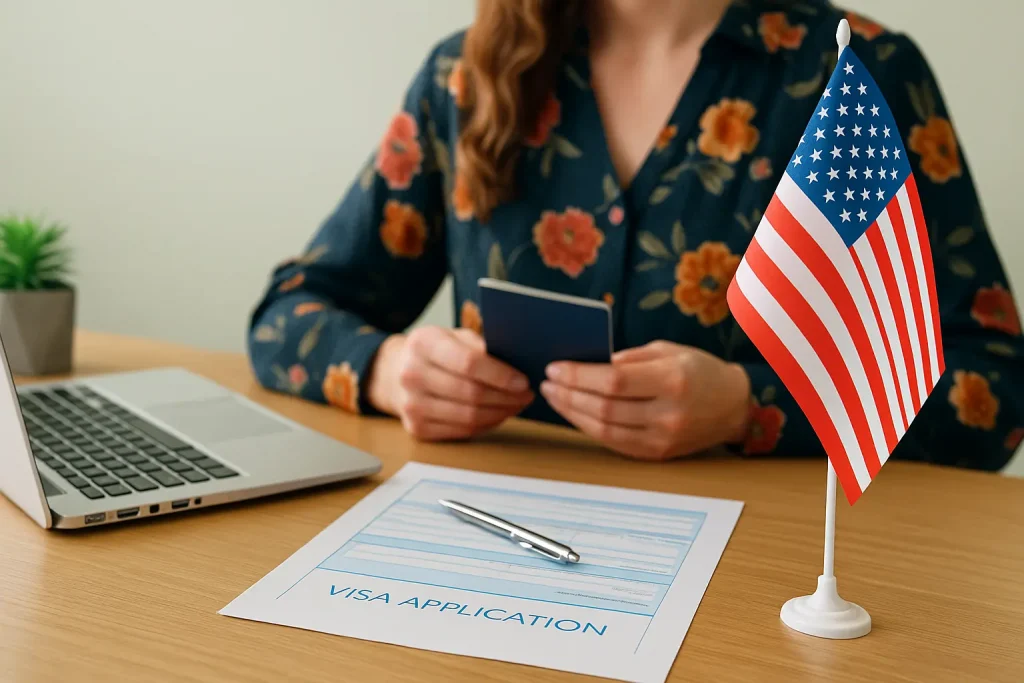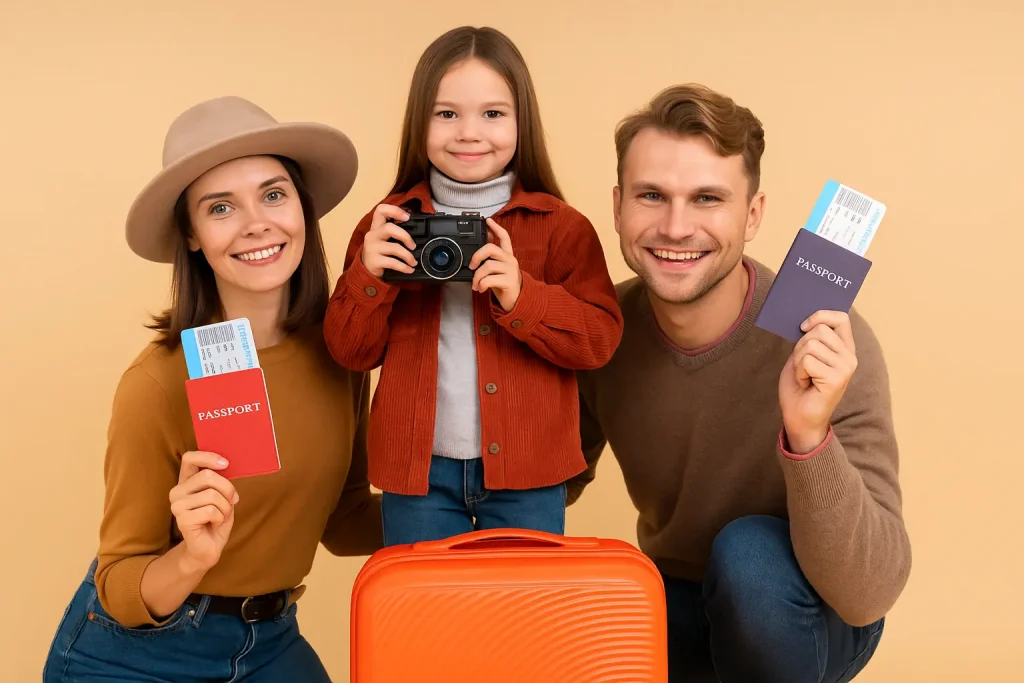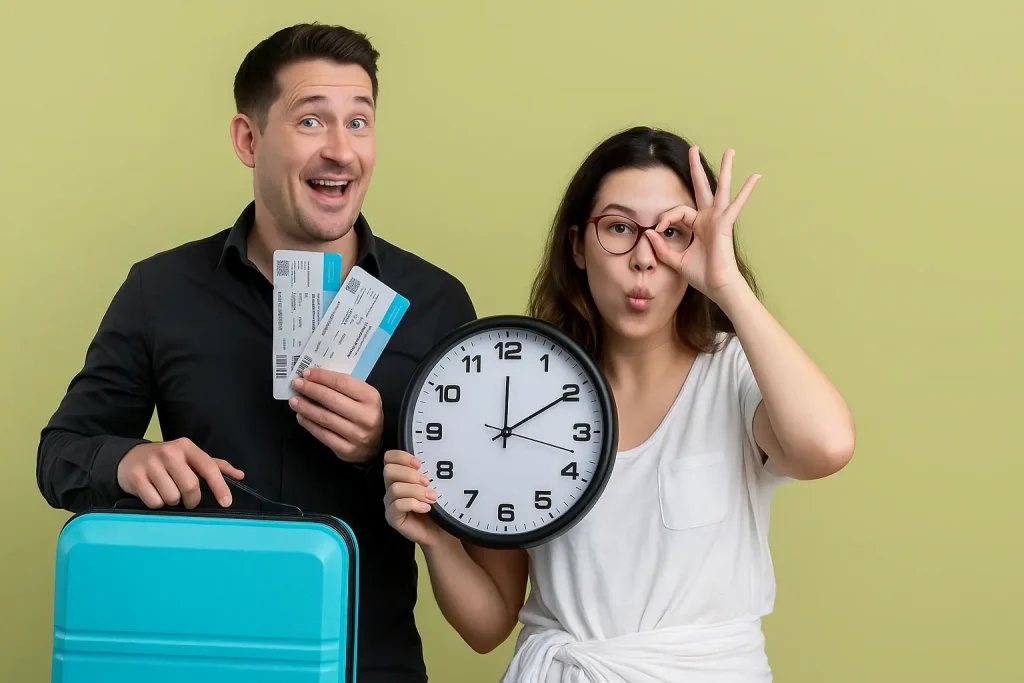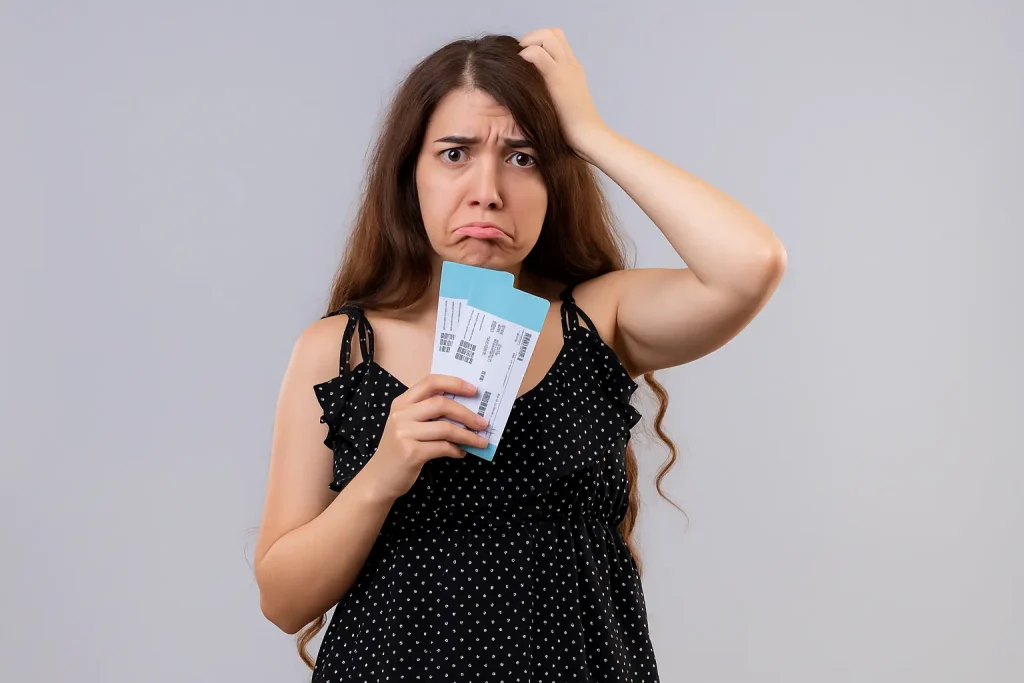How to Get a Tourist Visa to the U.S. in 2025: A Detailed Guide

Planning a trip to the US in 2025 and don’t know where to start? Obtaining a US tourist visa can seem like a complicated process, especially if you’re doing it for the first time. Collecting documents, filling out the DS-160 form, going through an interview, proving ties to your home country – every step matters. In this article, I’ve put together a detailed and up-to-date guide that will help you confidently go through the entire process: from the first application to receiving a visa in your passport. Step-by-step, clear, and with practical examples – everything you need to successfully apply for a US tourist visa in 2025.
Key Features of Obtaining a U.S. Tourist Visa
Traveling to the United States begins with successfully completing the visa process. For those wishing to visit the U.S. for tourism, medical treatment, participation in conferences, or short business meetings, it is necessary to apply for a non-immigrant B-2 visa – this is the tourist visa to the U.S. It is important to understand that the process is multi-step and requires a thorough approach. Each application is reviewed individually by the U.S. consulate based on the applicant’s unique circumstances.
A key aspect that consular officers focus on is determining what is known as “nonimmigrant intent.” This means the applicant must convincingly demonstrate their intention to return to their home country after completing the planned trip. Lack of such convincing evidence can lead to a visa denial. Therefore, your task is to gather and present as much supporting information as possible to prove your strong ties to your home country and the genuine nature of your travel plans.
Current data and statistics for Russian-speaking citizens

Global visa practices are constantly evolving, and the criteria for obtaining visas may change depending on the geopolitical situation, bilateral relations between countries, and other factors. However, when it comes to U.S. tourist visas, the overall trend remains fairly stable.
In 2025, applicants will still need to demonstrate their “nonimmigrant intent.” It’s important to stay up to date with the latest information published by official consular sources, as there may be updates to documentation or procedural requirements. Nonetheless, the core principles remain unchanged.
With proper and thorough preparation of documents, and convincing proof of strong social, economic, and family ties to your home country, the chances of obtaining a U.S. tourist visa remain favorable. Transparency and honesty in providing all information are your key allies on the path to a successful visa decision. Concealing information or attempting to distort facts can lead to serious negative consequences, so it’s essential to always follow the principle of full disclosure.
Where to Apply for a U.S. Tourist Visa: Choosing a Consulate
Choosing the right location to submit documents and attend the interview for a U.S. tourist visa is a strategic step that can impact the timeline and convenience of the entire process. While in theory, applicants can apply at any U.S. diplomatic mission outside their home country, some consulates may be more optimal. This is often due to current workload, availability of appointment slots, or specific procedures of a particular consulate.
Recommendations for Choosing an Interview Location
In practice, many applicants seeking a U.S. tourist visa prefer to apply at consulates located in neighboring countries or other regions where interview wait times are shorter. This approach can significantly reduce the waiting period and help speed up the decision on the visa application.
Before making a final decision about where to apply, it’s essential to research the most up-to-date information. It’s recommended to check the official websites of U.S. embassies and consulates to learn about current appointment availability. Popular destinations among applicants include countries in Eastern Europe, the Middle East, and Asia. Your choice will depend on your personal preferences, travel logistics, and the current appointment schedule.
Important Aspects of the Interview: What to Keep in Mind
The interview with the visa officer determines the outcome of your application. For those applying for a U.S. tourist visa, this is the moment to clearly convey: you are traveling temporarily and will definitely return home.
The consul assesses not only your documents, but also your behavior and responses. Confidence, composure, and honesty are key. There’s no need to recite your life story – just briefly explain the purpose of your visit, show ties to your home country, and demonstrate that you are well-prepared.
For example, one client simply said: “I’m flying to visit a friend in Chicago for two weeks, I have scheduled vacation – here’s a letter from my employer.” He also included property documents and photos confirming his travel plan. The consul asked 3 questions and approved the visa within a few minutes.
To succeed in your interview, it’s important to follow these recommendations:
Be clear and concise: Answer questions directly and to the point, without unnecessary details, but thoroughly enough for the consul to receive the required information.
Prepare supporting documents: Have all documents that can confirm your strong ties to your home country. These may include employment letters, property ownership papers, marriage or birth certificates, and other documents confirming family bonds.
Maintain honesty and consistency: Your answers must be truthful and should not contradict the information provided in your visa application. Any discrepancies may raise suspicions.
Know your itinerary and purpose of travel: Clearly state the purpose of your visit to the U.S. and be ready to explain your planned route, places you intend to visit, and the duration of your stay.
Remember, consular officers value your honesty, sincerity, and thorough preparation for the interview.
The Possibility of Using an Interpreter at the Interview
For many applicants, especially those who don’t feel confident in an English-speaking environment, having the option to bring an interpreter to the interview can be a significant advantage when applying for a U.S. tourist visa. This helps avoid potential misunderstandings due to language barriers and allows you to express your thoughts more clearly and accurately when answering the consul’s questions.
Most consulates offer this option, though policies may vary. In some cases, the consulate may provide its own interpreter; in others, you may be allowed to bring an accredited interpreter with you. It’s very important to confirm these details in advance with the consulate where you plan to apply. Keep in mind that while having an interpreter can reduce stress and improve communication, it is not a mandatory requirement. If your English level is sufficient for the interview, you may choose to complete it on your own.
Having trouble figuring it out?
Write to us – we’ll help!
Requirements for U.S. Tourist Visa Applicants
When reviewing a tourist visa application, consular officers pay close attention to a number of factors that confirm the applicant’s genuine intention to return home. Your main task is to prepare and present convincing arguments that demonstrate your strong ties to your home country. These ties act as a kind of “anchor,” proving the absence of immigration intentions.
The Role of Visa History in the Application Process
Having previously obtained visas to developed countries – such as Schengen states, the United Kingdom, or Canada – is definitely a plus when applying for a U.S. tourist visa. It demonstrates your experience with international travel and respect for the law. The consular officer sees that you previously complied with visa rules and returned home, which creates a positive impression.
However, it’s important to understand that a lack of such travel history or a “clean” passport is not an insurmountable obstacle. If you have no prior visas, focus on presenting the strongest possible evidence of your ties to your home country and clearly explaining the purpose of your trip. In this case, the number of past trips matters less than the quality of your visa preparation, which becomes the decisive factor in obtaining a U.S. tourist visa.
What to Do If Your Relatives Are in the U.S. Without Status: Tips for Applicants
This is one of the most sensitive issues that requires special attention when applying for a U.S. tourist visa. If you have close relatives (e.g. a spouse, child, or parent) currently in the U.S. without legal immigration status (e.g. they’re awaiting a decision on asylum or other immigration petitions), it can raise serious concerns for the consular officer. They may assume that your real intention is to reunite with your family and remain in the U.S.
In such cases, it’s critically important to clearly and convincingly demonstrate that your trip is solely for tourism or temporary purposes and that you have no intention of staying in the United States. Sometimes, this requires carefully crafting your documentation strategy and preparing thoroughly for the interview to minimize any doubts from the consular officer. For example, you can emphasize your strong, unbreakable ties to your home country that would prevent you from staying in the U.S.
One woman contacted us whose son was in the U.S. awaiting asylum. She was afraid that getting a tourist visa would be impossible. We helped her prepare a strong set of documents, presented her employment status, explained her responsibilities caring for an elderly parent, and clearly outlined the purpose of her trip. She received her visa after the first interview.
Important: Officers do not automatically deny visas just because you have relatives in the U.S. – they evaluate the risks and your situation as a whole. If your explanations are clear, logical, and supported by evidence, your chances remain good.
Ties to Your Home Country: A Key Factor in Visa Approval
The most fundamental and decisive factor for successfully obtaining a U.S. tourist visa is the convincing demonstration of your strong and indisputable ties to your home country. These ties serve as proof of your intent to return home after your trip. The stronger and more diverse these ties are, the higher your chances of receiving a positive decision.
Key factors that demonstrate your rootedness:
- Employment: Having stable employment with official documentation of your job, position, and regular income. Employment verification letters, contracts, and salary statements are important documents.
- Family: Close relatives remaining in your home country – spouse, minor children, or elderly parents. Family responsibilities are a strong argument in favor of your return.
- Property: Ownership of real estate (apartment, house, land), a car, or an actively operating business in your country. This indicates your economic attachment to your homeland.
- Financial stability: Showing sufficient funds to cover your U.S. trip and proof of significant assets at home. Bank statements, deposits, and other financial documents play a key role here.
The more convincingly you can present these aspects and emphasize your deep rootedness in your home country, the greater your chances of obtaining a U.S. tourist visa. Be prepared to clearly demonstrate that your future and main interests are firmly tied to your country.
U.S. Tourist Visa for a Child: Specifics for Families

Traveling with the whole family, especially with minor children, always requires careful planning and special attention to documentation. Obtaining a U.S. tourist visa for children has its own specific nuances that are important to consider to ensure the process goes as smoothly as possible. Understanding these details helps avoid delays and misunderstandings.
Permission from the Second Parent: Debunking Myths
Many parents mistakenly believe that a notarized permission letter from the second parent is mandatory when applying for a U.S. visa for a child – especially if the child is traveling with only one parent. It’s important to note that for the visa interview itself, this document is generally not a strict requirement.
However, it is always recommended to have the child’s birth certificate (original or a certified copy). If the second parent is absent or has limited involvement in the child’s upbringing (e.g., in cases of divorce or loss of parental rights), it is advisable to have supporting documentation. Having these documents not only demonstrates your responsibility and foresight, but also helps the consular officer form a full picture of the situation, reducing doubts and suspicions. It shows your preparedness to provide all necessary information for a well-grounded decision.
List of Documents for Obtaining a U.S. Visa for a Child: What to Prepare
As with adult applicants, obtaining a U.S. tourist visa for a minor child requires a standard set of core documents:
- A valid international passport of the child.
- A completed DS-160 visa application form meeting all requirements.
- A recent photo that meets U.S. visa photo standards.
In addition to this, for the visa interview and to complete a full set of documents, it is strongly recommended to prepare the following supporting papers:
- The original or notarized copy of the child’s birth certificate. This document confirms the family relationship and is one of the key elements.
- Valid passports of both parents (or the parent traveling with the child). This is necessary for identification and verification of parental rights.
- In case one parent is absent (due to death, loss of parental rights, or unknown whereabouts), you should have the relevant documents on hand: a death certificate, a court ruling on loss of parental rights, or a certificate from the authorities confirming the inability to determine the parent’s location.
Thorough preparation of all listed documents will greatly ease the process for the consular officer, help present the full picture, and, as a result, increase your chances of receiving a tourist visa for your child.
A family from a large city applied for visas: the mother, father, and two children. We suggested splitting the application – first having the parents obtain their visas, and then, after that, submitting documents for the children. This approach proved successful: the parents were approved, and two weeks later, the children also received their visas, referencing the parents’ successful visa outcomes.
This “step-by-step” scenario often helps reduce suspicion and increase the chances of approval.
Processing Times for a U.S. Tourist Visa in 2025
The question of how long it takes to obtain a U.S. tourist visa is one of the most frequently asked and certainly relevant for anyone planning a visit to the United States. Efficient and timely planning in advance is the cornerstone of successfully obtaining entry permission. Understanding the timing dynamics helps manage your schedule wisely and avoid unnecessary stress.
Best Time to Apply for a Visa

The duration of waiting for a consular interview can vary significantly, depending on many factors, including the selected U.S. diplomatic mission and its current workload. In 2025, as in previous years, the general recommendation remains: start the process of applying for a U.S. tourist visa several months before your intended travel date.
This approach provides sufficient time to complete all necessary steps:
- Thorough preparation of all required documents: This includes collecting certificates, statements, and other confirmations that may take time.
- Successful appointment scheduling: Interview slots, especially at popular consulates, may be booked several months in advance. Early scheduling increases your chances of choosing a convenient date.
- Handling possible unforeseen situations: Various questions may arise during the process, or additional information may be requested, which also requires time.
Often, interview slots are opened for extended periods in advance, allowing applicants to plan their steps wisely and avoid last-minute stress.
Possibilities for Expedited Visa Processing: Do They Exist?
Although the process of obtaining a U.S. tourist visa usually follows standard timelines, there are certain extremely exceptional circumstances under which consulates may consider requests for expedited interviews. These cases are typically related to urgent and humanitarian needs, such as:
- Emergency medical care: If the applicant or a close relative requires urgent treatment in the U.S. and appropriate medical documentation is available.
- Funeral of a close relative: In case of the death of a family member in the U.S. when urgent presence is required.
- Urgent business travel: When there is a sudden critical need to travel that cannot be postponed, supported by documentation (e.g., important contracts, legal proceedings).
It is important to understand that expedited interview appointments are not a standard option for regular U.S. tourist visa applications. Each expedited request is reviewed individually and must be supported by compelling evidence of extreme urgency.
In the vast majority of cases, to avoid stressful situations and ensure comfortable trip planning, it is recommended to begin the visa process well in advance, following general timeline guidelines.
Common Mistakes When Applying for a U.S. Tourist Visa: What to Avoid
To significantly improve your chances of successfully obtaining a U.S. tourist visa, it is essential to be aware of and avoid typical mistakes that can lead to denial. Certain actions and circumstances may serve as “red flags” for the consular officer, raising doubts about your true intentions..
Actions That Can Lower Your Chances of Visa Approval
There are several common pitfalls that deserve special attention and should be strictly avoided:
- Providing inaccurate or false information. It is crucial that all the details in your visa application form (DS-160) and your answers during the interview are completely truthful and reflect reality. Any discrepancies or attempts to mislead may result not only in visa denial but also in long-term restrictions on future applications.
- Withholding significant facts. Do not try to hide information about relatives living in the U.S. (even if their status is unclear) or previous visa denials (whether in the U.S. or other countries). Consular services have access to extensive databases, and any attempt to conceal or distort information is likely to be discovered. This will inevitably lead to denial and create a negative visa history.
- Weak ties to your home country. One of the most common reasons for denial is the applicant’s failure to demonstrate strong and convincing ties to their country. If the officer does not see clear reasons for your return (e.g. stable job, family, property, financial commitments), they may assume you have immigration intent.
- Immigration intent. The main purpose of a U.S. tourist visa is short-term stay. Any actions, phrases, or circumstances that may be interpreted as your intent to stay permanently or change your status after entry will be viewed extremely negatively. This could include indirect hints, such as references to job searches or studying.
Impact of Previous Visa Denials on Future Applications: Warnings

It is important to understand that being denied a U.S. tourist visa is not an isolated event. Such a denial can have serious consequences and may affect your chances of obtaining visas to other developed countries. For example, when applying for a visa to the UK, Canada, or Schengen countries, application forms often include a direct question about previous U.S. visa denials.
Answering “yes” to this question may lead to additional inquiries and require detailed explanations, complicating the process of obtaining a visa to another country. That is why it is essential to approach your first U.S. tourist visa application with maximum responsibility and care. Thorough professional preparation of documents and for the interview can help avoid negative consequences and lay the foundation for a successful visa history.
We sincerely hope that this detailed guide will help you confidently navigate the entire process of obtaining a U.S. tourist visa in 2025. Remember, each case is unique, but with the right approach and in-depth preparation, your dream of visiting the United States can become a reality.
Still have questions?
Write to us, and our attorney will help you understand your situation.
